20 start with N start with N
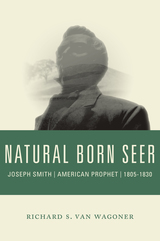
Joseph Smith survives today as one of nineteenth-century America’s most controversial religious figures. He claimed visions of angels, dictated a lost record of the ancient inhabitants of the New World, announced new revelations from heaven, and restored what he believed was an ancient yet more complete form of Christianity, over which he presided as prophet, seer, and revelator until his death in 1844.
A child of impoverished Yankees, raised in rural New England and New York, Smith grew up in a hardscrabble frontier culture that embraced a spectrum of competing folkways, religious fervor, and intellectual thought. He was both a product of his times and a syncretic innovator of a compelling vision for God’s people. Perhaps more importantly, he was the self-proclaimed herald of Christ’s imminent return, called by the Father to reveal the fullness of the Christian gospel for the last time.
As prize-winning historian Richard S. Van Wagoner narrates the first twenty-five years of Smith’s life, the young seer struggled with his family through a series of roller-coaster hardships, eventually securing work as a scryer of lost treasure and money digger. In the wake of successive failures, including run-ins with the law, Smith’s glass-looking activities gave way to more religiously oriented pursuits, especially after a heavenly messenger showed him the location of buried golden plates containing a pre-Columbian story of the Americas and charged him with the record’s decipherment and publication.
Smith also learned, following another extraordinary vision, that his sins had been remitted, that humanity was in a state of apostasy, and that Jesus would soon return to the earth. After eloping with Emma Hale, much to her skeptical father’s chagrin, the couple settled down to complete work on what would appear for sale in early 1830 as the Book of Mormon. By this time, Smith had begun to shoulder more fully the prophet’s mantle, issuing proclamations in God’s own voice, and on April 6, 1830, organized the Church of Christ, known today as the Church of Jesus Christ of Latter-day Saints.
“I treat the early years of the Mormon prophet as I would approach an archaeological dig,” Van Wagoner explains. “The deepest levels, those deposited first and least contaminated by subsequent accumulates, are of primary interest in my pursuit of the historical Joseph. Mindful of the prophet’s controversial reputation, I try to remain sensitive to the impact that some of the more problematic elements of his behavior may have on believers. But truth is often best evidenced in the detail.”
Van Wagoner’s meticulously researched study offers more detail than any previously published biography of Smith, and provides what may be the most culturally nuanced analysis ever attempted of the early years of the American prophet.
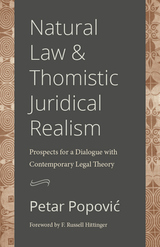
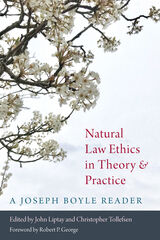
Part One: Articulating a Theory of Natural Law contains three sections in which Boyle defends the reality of free choice and the view that the basic reasons for action, or first principles of natural law, are incommensurable in goodness. Boyle identifies the basic moral standard for choice and action, and develops an account of human action that elucidates the important role played by intention and double effect in their moral evaluation.
The essays in Part Two: Natural Law Theory and Contemporary Moral Problems demonstrate the strength and scope of Boyle’s natural law account, as he brings it to bear upon just war theory, property and welfare rights, and issues in bioethics. The essays in bioethics address the difficult question of whether it is appropriate to tube-feed patients in persistent vegetative state, and include an unpublished essay, “Against Assisted Death,” which he delivered as the Anscombe Lecture at The Anscombe Bioethics Centre in Oxford about a year before he died.
This volume also includes a Foreword by Princeton’s Robert P. George; an Introduction by the editors that highlights Boyle’s contribution to the development of the new classical natural law theory; and a bibliography of Boyle’s publications.
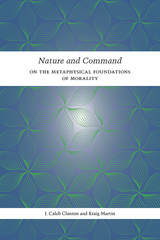
Since at least the time of Plato, religious explanations of the metaphysical foundations of morality have typically fallen into one of two camps: natural law theory, according to which morality is fundamentally explained by facts about human nature—facts that God is responsible for—and divine command theory, which holds that moral obligations arise directly from God’s commands or some other prescriptive act of the divine will. J. Caleb Clanton and Kraig Martin offer an accessible analysis of these traditional views, reconstruct the various arguments for and against them, and offer an extended consideration of the historical emergence of the divide between these positions within the Christian tradition. Nature and Command goes on to develop and defend a theory that combines these two views—a metaethical approach that has not yet received the scholarly attention it deserves.
Along the way, the authors make use of underexplored theological resources drawn from the Stone-Campbell movement, a nineteenth-century restoration movement that culminated in one of the largest Protestant groups in America by the dawn of the twentieth century. Nature and Command summons the resources of this particular Christian heritage—its first principles, call for unity, and ecumenism—to solve one of the great dilemmas of moral philosophy and theology dating back to Plato’s Euthyphro.
This historically aware, argumentatively rigorous, and highly readable volume will serve as a valuable resource for moral philosophy and ethics, as well as for mining the Stone-Campbell Restoration tradition for historical and theological insights.
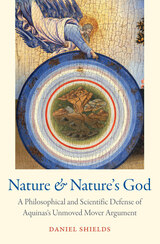
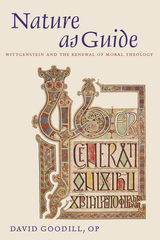
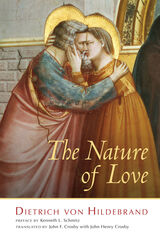
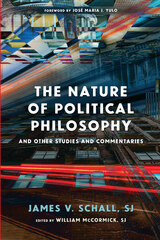
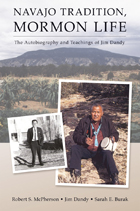
Born in the early 1940s in northern Arizona’s high country desert, Jim Dandy began life imbued with the traditions of the Navajo people. Raised by his father and grandfather—both medicine men—and a grandmother steeped in Navajo practices, he embraced their teachings and followed in their footsteps. But attending the LDS Placement program in northern Utah changed his life’s course when he became a member of the Mormon Church. Following graduation from high school, Jim served an LDS mission among his people, obtained a bachelor’s degree, and entered the work force in southeastern Utah as a career counselor, teacher, and community advocate who improved educational opportunities on the Navajo Reservation.
Jim has led a life of service and teaching. He maintains the traditional philosophy with which he was raised and the Mormon beliefs that he learned and continues to follow; his life reflects the values inherent in these two different worlds. Readers interested in Navajo philosophy will find his blend of these two distinct views fascinating, while others will better understand the effects of the controversial placement program on the life of one individual. However, this is primarily the warm story of a man’s life among his people and his love for them and their culture.
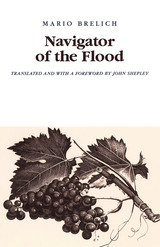
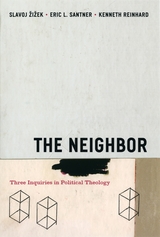
In The Neighbor, three of the most significant intellectuals working in psychoanalysis and critical theory collaborate to show how this problem of neighbor-love opens questions that are fundamental to ethical inquiry and that suggest a new theological configuration of political theory. Their three extended essays explore today's central historical problem: the persistence of the theological in the political. In "Towards a Political Theology of the Neighbor," Kenneth Reinhard supplements Carl Schmitt's political theology of the enemy and friend with a political theology of the neighbor based in psychoanalysis. In "Miracles Happen," Eric L. Santner extends the book's exploration of neighbor-love through a bracing reassessment of Benjamin and Rosenzweig. And in an impassioned plea for ethical violence, Slavoj Žižek's "Neighbors and Other Monsters" reconsiders the idea of excess to rehabilitate a positive sense of the inhuman and challenge the influence of Levinas on contemporary ethical thought.
A rich and suggestive account of the interplay between love and hate, self and other, personal and political, The Neighbor will prove to be a touchstone across the humanities and a crucial text for understanding the persistence of political theology in secular modernity.
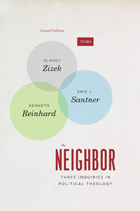
In The Neighbor, three of the most significant intellectuals working in psychoanalysis and critical theory collaborate to show how this problem of neighbor-love opens questions that are fundamental to ethical inquiry and that suggest a new theological configuration of political theory. Their three extended essays explore today's central historical problem: the persistence of the theological in the political. In “Toward a Political Theology of the Neighbor,” Kenneth Reinhard supplements Carl Schmitt’s political theology of the enemy and friend with a political theology of the neighbor based in psychoanalysis. In “Miracles Happen,” Eric L. Santner extends the book's exploration of neighbor-love through a bracing reassessment of Benjamin and Rosenzweig. And in an impassioned plea for ethical violence, Slavoj Žižek’s “Neighbors and Other Monsters” reconsiders the idea of excess to rehabilitate a positive sense of the inhuman and challenge the influence of Levinas on contemporary ethical thought.
A rich and suggestive account of the interplay between love and hate, self and other, personal and political, The Neighbor has proven to be a touchstone across the humanities and a crucial text for understanding the persistence of political theology in secular modernity. This new edition contains a new preface by the authors.
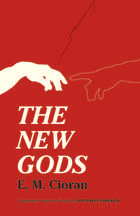
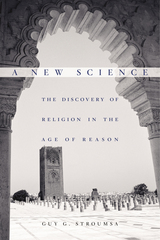

The mid-nineteenth century was a period of extraordinary intellectual excitement and tension and nowhere is this more vividly illustrated than in the divergent careers of Cardinal Newman and his brother Francis. Both were men of considerable mental powers and high moral purpose. They shared a devotion to the search for religious truth and spiritual values, yet their intellectual development drove them further and further apart until they came to represent the two opposing philosophical positions of their age.
Professor Robbins' study of the brothers reveals in a new and striking way the master currents of the period which carried these symbolical figures in such different directions. With considerable psychological insight he traces their early lives from the common evangelical zeal of their adolescence through their striking careers at Oxford. He then follows the famous story of John Henry Newman's difficult and hesitating journey of conscience which led him to break with the Church of England and embrace the rigid dogma of Rome. He contrasts it with the almost unknown progress of Francis Newman from the life of an evangelical and missionary to become an apostle of all those liberal, rationalist ideas which his brother had rejected with such vehemence and to doubt the very bases of the christian faith.
Cardinal Newman's life has already been explored in many books but Professor Robbins draws on illuminating new material. He quotes from many unpublished letters between the brothers and from the works of Francis which few but he have read for two generations.
The weight of scholarship behind this book makes it an important study for students of nineteenth-century literature, philosophy and religion, while the general reader should find this a lucid and compelling account of the interplay of sharply contrasting ideas and personalities.
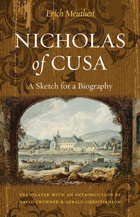

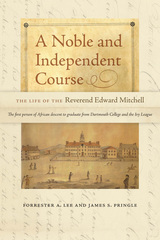

Conventional portraits of Neo-Confucianism in China are built on studies of scholars active in the south, yet Xue Xuan (1389–1464), the first Ming Neo-Confucian to be enshrined in the Temple to Confucius, was a northerner. Why has Xue been so overlooked in the history of Neo-Confucianism? In this first systematic study in English of the highly influential thinker, author Khee Heong Koh seeks to redress Xue’s marginalization while showing how a study interested mainly in “ideas” can integrate social and intellectual history to offer a broader picture of history.
Significant in its attention to Xue as well as its approach, the book situates the ideas of Xue and his Hedong School in comparative perspective. Koh first provides in-depth analysis of Xue’s philosophy, as well as his ideas on kinship organizations, educational institutions, and intellectual networks, and then places them in the context of Xue’s life and the actual practices of his descendants and students. Through this new approach to intellectual history, Koh demonstrates the complexity of the Neo-Confucian tradition and gives voice to a group of northern scholars who identified themselves as Neo-Confucians but had a vision that was distinctly different from their southern counterparts.
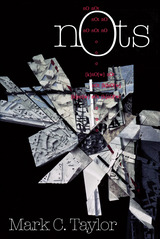
In the first section of this book, Taylor discusses the question of the "not" in the religious thought of Anselm, Hegel, Derrida, and Nishitani. In the second part, he analyzes artistic efforts "to figure not" in the work of artists Arakawa and Madeline Gins, architect Daniel Libeskind, pop artist David Sallee, and pop icon Madonna. The final section consists of a deeply personal and scientifically informed chapter that discusses the workings of negativity in immunology and illness.
Taylor's essays work toward a sense of the not as unnameable as it is irrepressible—an "unthinkable third" that falls between being and nonbeing. Bringing together concerns that span Taylor's early investigations of Hegel and Kierkegaard and recent studies of art and architecture, Nots is an important contribution by one of the most original and distinctive voices now writing on the American scene.
Religion and Postmodernism series
READERS
Browse our collection.
PUBLISHERS
See BiblioVault's publisher services.
STUDENT SERVICES
Files for college accessibility offices.
UChicago Accessibility Resources
home | accessibility | search | about | contact us
BiblioVault ® 2001 - 2024
The University of Chicago Press









